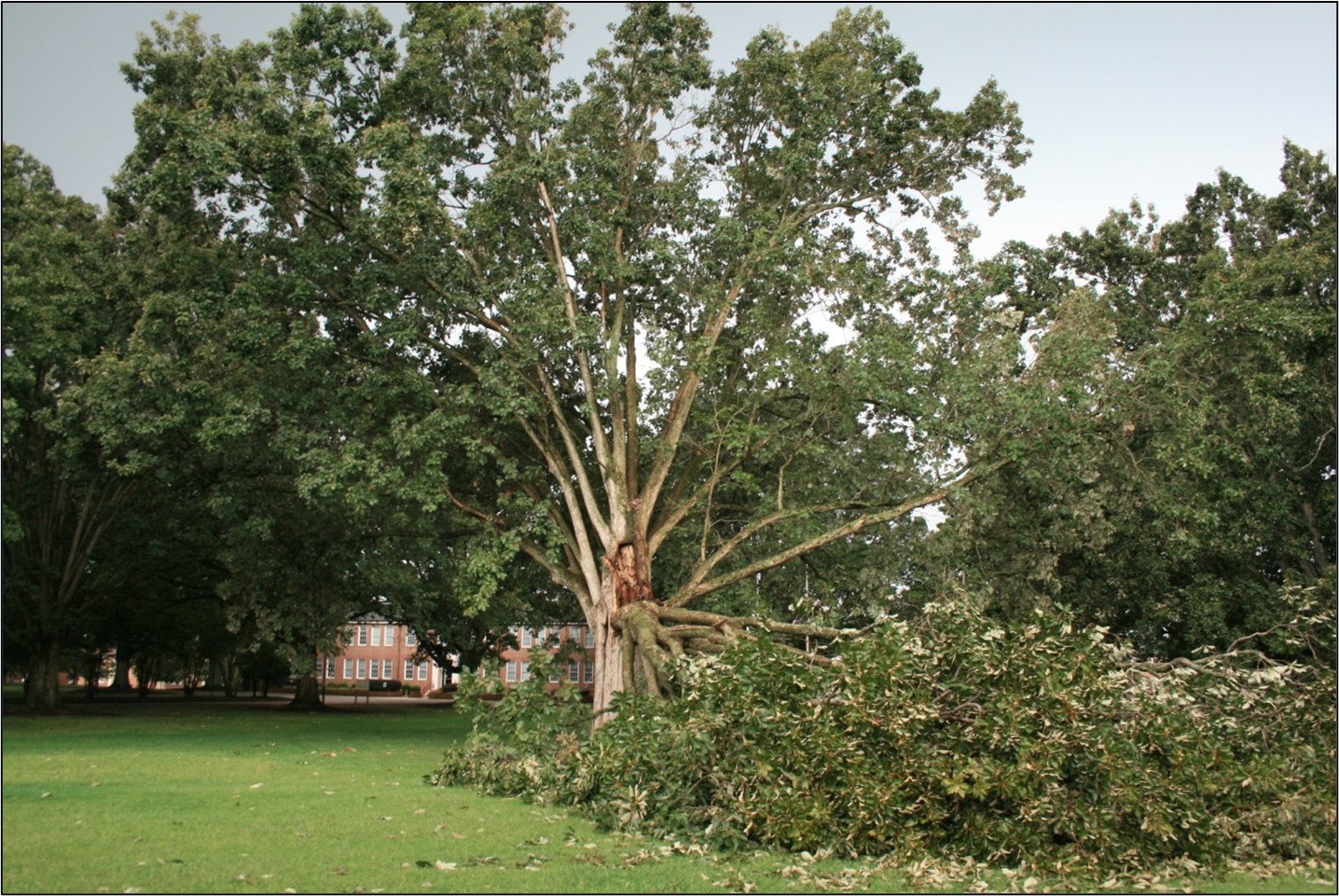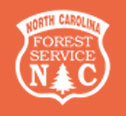IT'S GETTING SLICK OUT THERE: HOW TREES HANDLE THE ICE AND HOW TO HANDLE THE TREES
(January 12, 2021)
IT'S GETTING SLICK OUT THERE:
HOW TREES HANDLE THE ICE AND HOW TO HANDLE THE TREES
by Dr. Barb Fair, NC Cooperative Extension

Annually ice storms damage trees across the United States, costing millions of dollars in cleanup costs as well as loss of the urban forest. Typically, there is a major ice storm about every 8 years.
Some would say that the best approach is to use smaller maturing trees, like redbud and serviceberry. But, is that really the answer? While tree species is an important criteria in tree response to ice and snow loading, it is not the only factor. More about that in a bit…
So, what makes one branch or tree fail over another? As an ice storm progresses, more and more ice can accumulate on surfaces, including tree branches. Ice can increase branch weight by up to 3 times. Trace accumulations up to about ¼ - ½“ can cause small branches and already faulty limbs break. When accumulation reaches about 1”, conspicuous failures occur. Branch failure essentially occurs when the loading exceeds the wood’s resistance, or when constant loading further exacerbates an already weak area of a branch. However, wood strength is not quite as important as branch attachment, at least until ice accumulation surpasses the bearing capacity of the branch. Not surprisingly, strong winds increase the potential for failure.
Are there any characteristics of branches or trees that make them more prone to failure? I realize this will be shocking to many of you (wink, wink), but trees that have been well-maintained and have sound branch structure are less prone to failure! Vertical limbs are more likely to incur greater damage than horizontally oriented branches. This makes sense, especially if there are bark inclusions as well. Structurally weak branch unions have a higher likelihood of damage. Research has also shown that branches with many lateral shoots are more likely to fail when compared to branches of the same approximate diameter and length that do not have excessive laterals. Trees with an unbalanced crown are also more prone to losses to ice accumulation. Of course, dead wood is always highly prone to failure no matter the weather.
So, what happens after the storm moves on? Clean up begins, of course. Some data shows that it is not uncommon for people to be injured during post-storm assessment. It is therefore critical to be sure your staff has received proper training. The Forest Service and ISA have plenty of training opportunities to help keep your people safe. When assessing trees post-storm to determine pruning or removal needs there are a few things you and your staff should consider. Eight years after a big ice storm in Rochester, New York in 1991 a study was conducted to evaluate the city’s storm response. The bottom-line on their findings are as follows- 1) trees with a crown loss of over 50% will likely decline despite pruning to repair damage, and 2) trees with crown loss greater than 75% should be removed. You should certainly consider extent of crown loss and area of the tree lost when deciding whether to repair or remove trees. Damage to the interior of the canopy is more significant than that on the outer edges. In addition, consider tree size as well as site and history. And finally, consider tree species.
As I alluded to earlier, species is an important factor in tree response to storms. In general, angiosperms are more susceptible to ice damage than are gymnosperms. This has to do with form, but also the plant’s ability to re-sprout. Gymnosperms do not re-sprout readily. So, consider re-sprouting potential as well as ability to compartmentalize and growth habit. While researchers have found similar responses for a number of species, their ratings on resistance levels may differ slightly. Below is a list of species indicating their susceptibility to ice damage. Some will not surprise you, but others may. My suggestion is to learn from history- what has happened in your community? Trust your knowledge of how trees grow. And finally, employ young tree training in your community. Set aside the money for it and just get it done! There is simply too much data showing that structurally sound trees are better adapted to all forms of weather. The answer is not planting an urban forest of only small maturing trees. We know larger trees provide the greatest and most long-term ecosystem services. So, use the following list but weigh it with all other factors and trust your judgement.
Resistant Acer platanoides, Norway maple Carpinus caroliniana, musclewood Catalpa speciosa, catalpa Cercis canadensis, redbud Gymnocladus dioicus, Kentucky coffeetree Juglans nigra, black walnut Liquidambar styraciflua, sweetgum Quercus alba, white oak Quercus bicolor, swamp white oak Thuja spp., arborvitae Tilia cordata, littleleaf linden Tilia tomentosa, silver linden Tsuga canadensis, eastern hemlock
Moderate Acer rubrum, red maple** Acer saccharum, sugar maple** Fraxinus americana, white ash Liriodendron tulipifera, tuliptree* Ostrya virginiana, ironwood Pinus strobus, eastern white pine Platanus occidentalis, sycamore* Querus macrocarpa, bur oak Quercus rubra, northern red oak**
Susceptible Acer saccharinum, silver maple (well pruned prior to storm**) Celtis occidentalis,common hackberry Fraxinus pennsylvanica, green ash Gleditsia triacanthos ´ inermis, thornless honey locust Prunus serotina, black cherry Pyrus calleryana ‘Bradford’, Bradford callery pear Quercus palustris, pin oak Robinia pseudoacacia, black locust Tilia americana American linden Ulmus americana, American elm Ulmus pumila, Siberian elm
* Indicated as highly susceptible by other authors; ** Indicated as resistant by other authors




